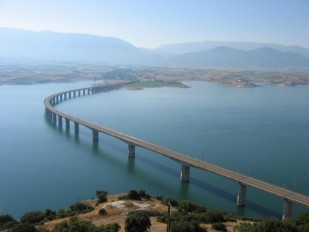Bridge Collapses in Bihar: A Wake-Up Call for Infrastructure Resilience


Source: newindianexpress.com
Want to read more like this story?
An under-construction bridge in India has experienced its second collapse in a year: no fatalities
Jun, 08, 2023 | NewsThe collapse of a section of an under-construction bridge over the Ganges River has prompted an inv...

After the Recent NTSB Report: 68 U.S. Bridges Now Flagged for Collapse Risk
Mar, 29, 2025 | NewsWhen the Francis Scott Key Bridge in Baltimore catastrophically collapsed in March 2024 after being...

Bridge Collapse in Peru: Structural Failure Sends Bus Crashing into River
Feb, 16, 2025 | NewsA tragic accident unfolded in northern Peru when a 60-meter-long bridge collapsed, sending a double...
Video of Captivating Structural Engineering News in 2022
Jan, 03, 2023 | NewsTheStructuralEngineer.info is pleased to launch a video with a selection of the most captivating ne...

How climate change is affecting the safety of bridges
Oct, 15, 2019 | NewsA new study, recently published in the American Society of Civil Engineers (ASCE) Jou...

Lake Polyfytos Bridge in Greece is closed for at least a month due to structural damage
Mar, 16, 2023 | NewsThe Lake Polyfytos Bridge, in Greece, has been closed due to structural damage. More specifically...

Emphasis on Aesthetics Led to the Collapse of Tretten Timber Bridge in Norway
Aug, 15, 2022 | NewsFollowing the collapse of the Tretten Bridge in Norway in August 2022, an official report by the No...

Two Dead, Many Injured After Bridge Collapse in Maharashtra
Jun, 15, 2025 | NewsA decades-old iron bridge spanning the Indrayani River in the Kundmala area of Pune, Maharashtra, c...
Norway wooden bridge collapse: Drivers of two vehicles rescued
Aug, 17, 2022 | NewsA wooden bridge over a river in southern Norway collapsed early Monday, with a car plunging into th...
Trending

Taipei 101’s impressive tuned mass damper

Characteristics of Load Bearing Masonry Construction

Morocco Implements Landmark Dam Perforation to Combat Water Stress in Marrakech

The Line at Neom faces feasibility reassessment while construction continues

Dutch greenhouses have revolutionized modern farming

Suspension bridge buckles under force of deadly super typhoon in Philippines


